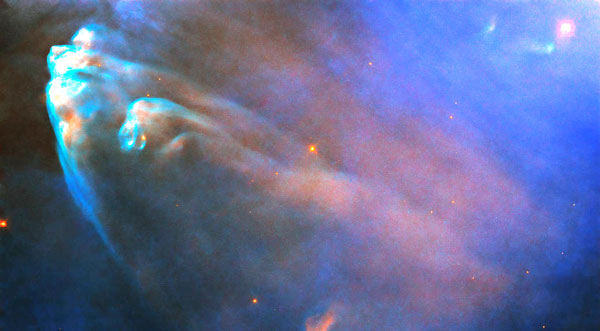
Hubble Captures Stunning Image of Colliding Gases in ‘Running Man’ Nebula
Hubble Space Telescope often captures amazing images of mysterious events in space. This has enabled astronomers to expand research and uncover new details. Recently, the telescope tried to understand how young stars affected their environment and watched a shockwave collide with luminous gas in the ‘ran people’ nebula. The image of the Herbig-Haro object, known as HH 45, shows gas clouds and dust shines. Herbig-haro is a type of nebula formed when the gas from the newlyborn star collides with the surrounding dust at a large speed and produces shock waves.
Herbig-haro objects are rarely visible. This object is located in the Nebula NGC 1977, also called nebula running nebula, which is a complex structure of three nebula in the Big Orion Nebula, around 5,000 light years from the earth.
Nebula that is running is a reflection nebula, which means not emitting its own light but reflects the light from the closest stars “like a street lights that illuminate the fog,” according to NASA. Hubble is looking at this region for “stellar jets and disks forming planets around young stars.” It tries to check how their environment affects the evolution of the disk.
Hubble images show two sets of ionized gas with blue and purple. While oxygen bound blue shows, purple represents ionized magnesium. “Researchers are very interested in these elements because they can be used to identify shocks and ionization fronts,” read NASA statements.
This image is not a bad arrest for the observatory that wakes up after a technical problem and enters the “safe mode” in October. Hubble, a joint project by NASA and ESA, was last served directly in 2009 and has not been visited by astronauts since 2011.
NASA will launch a stronger James Webb telescope in December as a “successor” to the Hubble Space Telescope. Quoting the difference between the two, NASA has stated that their ability is not identical. One of the differences in NASA indicated is that while James Webb Telescope will learn the universe mostly in infrared, Hubble has focused on optical wavelengths and ultraviolet.
